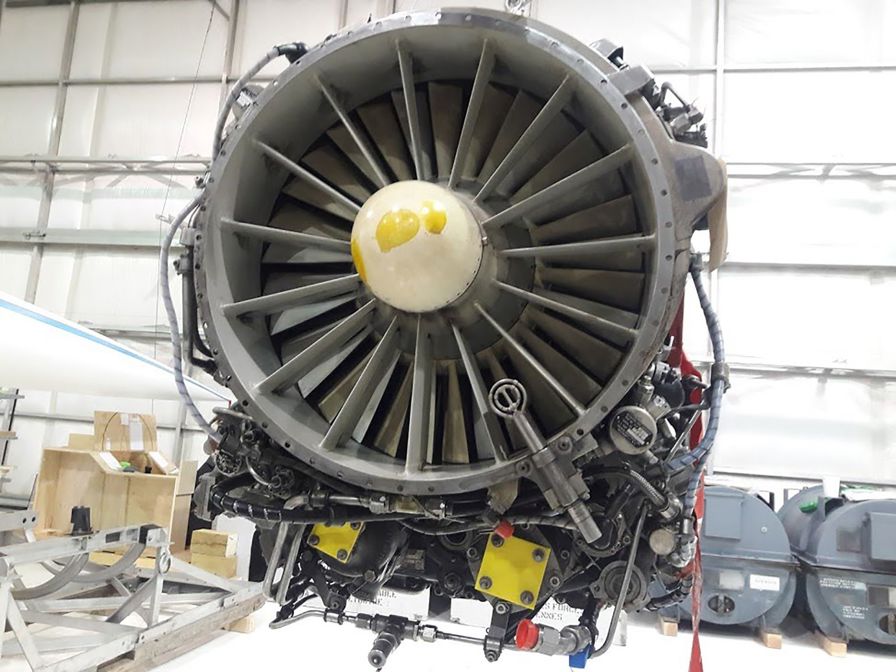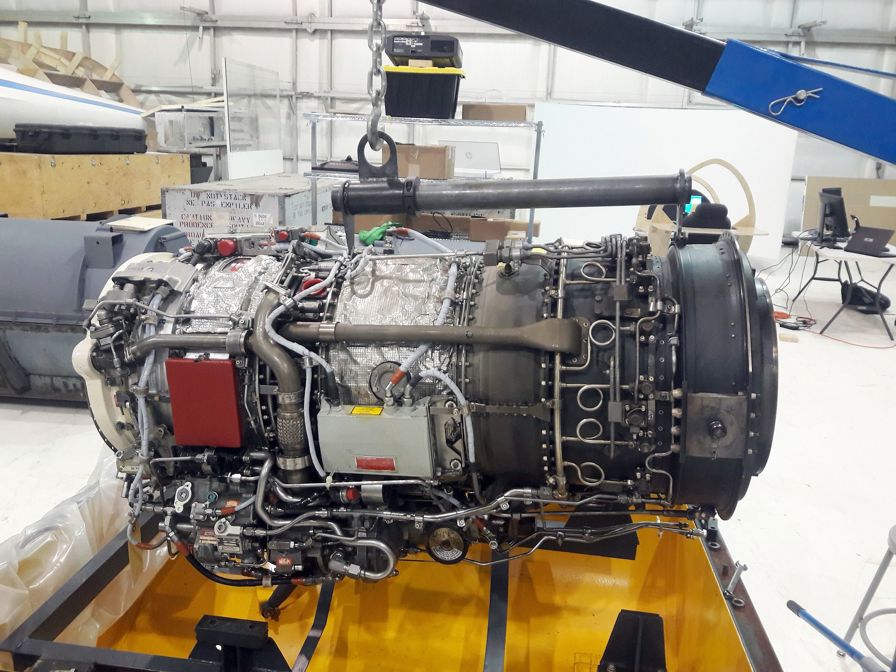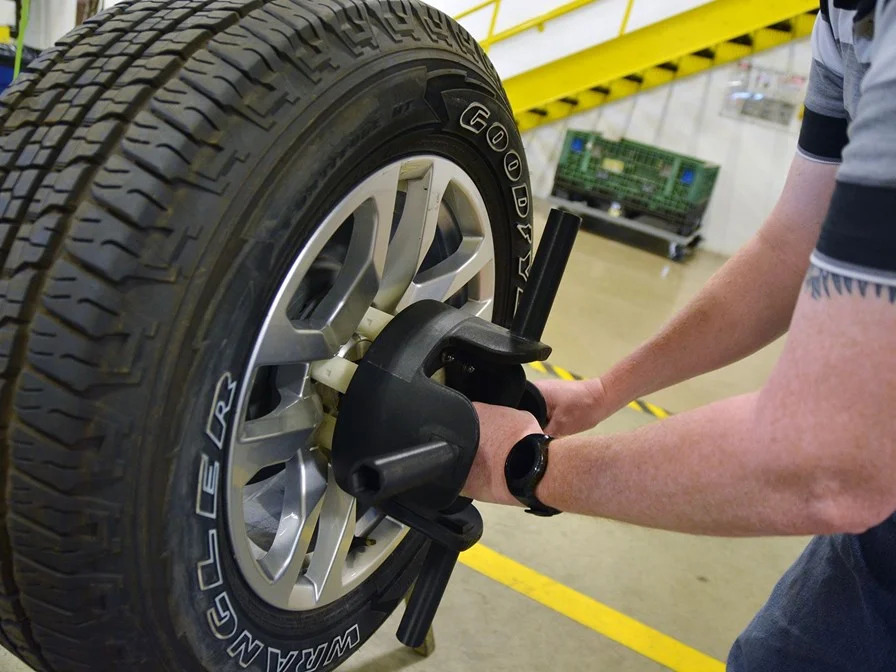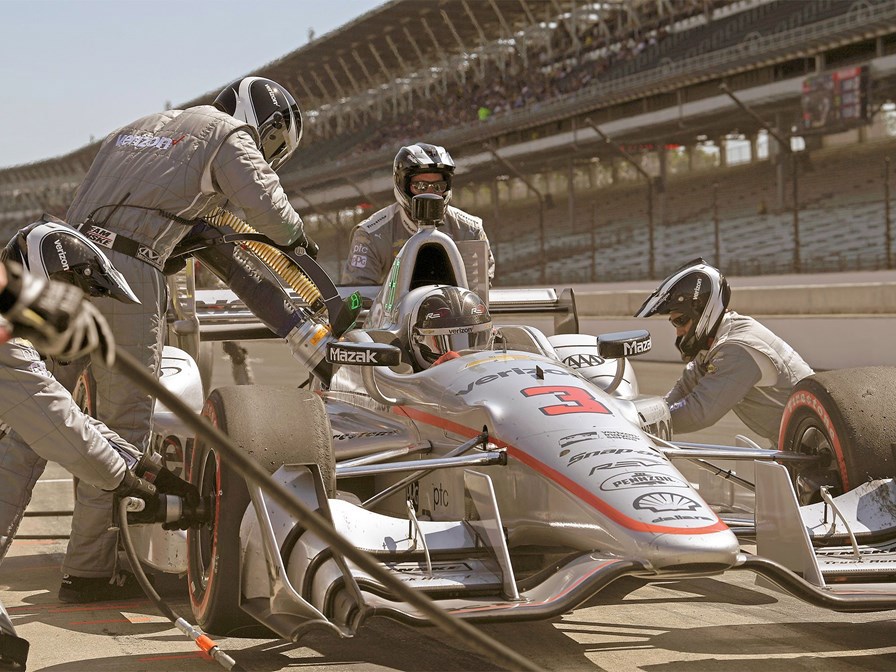BOOM’s mission is concise: to make the world dramatically more accessible by creating an aircraft that’s twice as fast as today’s commercial air fleet, which in turn makes the world twice as small. But in an industry where innovation fuels success, the importance of tooling to support rapidly evolving designs can’t be underestimated. “This is where the 3D printer shines,” says Ryan Bocook, manufacturing engineer.
Speed is at the core of BOOM and having the ability to reduce design time through rapid iteration of a part means procurement lead time is reduced. According to Bocook, With additive manufacturing, “we can design and build a custom tool in a matter of hours.”
BOOM recently built an alignment jig to help in their Materials and Process lab when making test samples for the XB-1 Supersonic Demonstrator. “We have built drill jigs complete with pockets for drill bushings and tooling balls to locate parts in the aircraft very precisely.”
Cost savings are significant with additively manufactured jigs and fixtures at BOOM. “I recently had a small part for an assembly fixture quoted from two machine shops. Both came in over $1K higher per part than what I could 3D print them for,” said Bocook. “Not to mention lead time and shipping.”
Additively manufactured tooling is a mainstay at BOOM Supersonic now, but the tools’ value goes beyond time and cost savings. Design complexity not possible with traditional machining means Boom’s only limitation is their imagination. “If we can think it we can print and try it out,” says Bocook.
Advice from BOOM’s Ryan Bocook:
1. Many shop floors limit the use of their 3D printers to a select few. “This is counterproductive. Let your team explore the possibilities. Give access to the full shop. Give them a material budget and time on the machine. I bet they will be printing things that will revolutionize your approach.”
2. Choose the right 3D printer. All the benefits of 3D printing, including speed, cost and iterations are lost if the 3D printer is difficult to use or is constantly requiring maintenance. “Our Stratasys machines are basically hands off/lights out manufacturing and require very little input to keep running. I can train anyone in the shop to set up and run the machines and they are off to the races the same day with zero issues.”
Liberty Electronics, a contract manufacturing shop producing high-end assemblies for the military and aerospace industries in Pennsylvania, began 3D printing jigs and fixtures to save time and cost in custom tooling. They ended up saving something even more valuable – workers’ health and livelihoods.
The value of an ergonomically designed tool is obvious: more efficient production comes from better design, light-weighting and the ability to quickly design custom fixtures. But according to George Allman, manufacturing engineering supervisor at Liberty, efficiency includes not only time to part but also employee retention.
A one-off custom tool had been 3D printed for an employee enabling her to continue in her job, despite a painful medical condition. The success of this custom tool got Liberty thinking about the true value of ergonomically designed and 3D printed tools.
“We want to retain our employees,” says Allman. “We want to make accommodations to enable people to work safely and continuously.”
The company purchased its first 3D printer back in 2013, a Stratasys uPrint SE™, quickly justifying the purchase of a Fortus 380mc™ and an Objet30 Prime™. “Costs don’t end with the price of the injury itself,” says Allman, “it’s the underlying costs of lost productivity, lost time and overtime.” For Liberty, the initial investment in 3D printing was quickly offset by the savings in increased productivity and employee retention, as well as eliminating outsourcing.
~65% Reduction in process time per task
300% Increase in productivity
~85% Cost savings of 3D printed custom part vs. outsourcing
Eckhart, a leader in advanced industrial solutions, works to improve safety, reliability and efficiency in manufacturing. In industries from medical OEMs to automotive, the Michigan-based company helps to customize factory floor solutions, tailoring their solutions to the unique needs of each client.
“Our customers want proven solutions, durable solutions; the assembly environment is harsh,” says Bob Heath, additive manufacturing applications engineer. Repetitive tasks can be especially taxing on employees. “These tools are being used 60 times an hour for an 8-hour shift, 3 shifts a day, 6 to 7 days a week.”
Working to alleviate repetitive strain on the operator is one way 3D printing serves Eckhart. Being able to design customized, ergonomic tooling that’s also far lighter-weight than traditionally designed tools is one benefit of the additive process at Eckhart. But today’s manufacturing environment struggles with another shortfall, as well – the lack of skilled workers.
“The shortage of skilled workers is a theme we hear constantly from our customers and part of our work is to help address that need,” says Drew Morales, director of business development and engineering systems. 3D printed tools help provide solutions that help make up for the shortage of workers as well as “projecting the ability of one operator so that one can be the same as five...” says Morales.
Part of Eckhart’s 3D printing success is due to the strength and versatile materials available with Stratasys 3D Printers. “With Stratasys engineering-grade materials such as FDM Nylon 12™ Carbon Fiber and ULTEM™ 1010 resin, we are able to produce durable, lasting solutions that can hold up and withstand the rigors of an automotive environment,” says Heath.
When a company’s success depends on its ability to rapidly customize, tooling can become the roadblock to success due to the time to part and the cost to get there. Nova Tech Engineering, a producer of automated machinery for use by poultry hatcheries worldwide, was okay with machined tools until they hit growth mode and needed the ability to rapidly iterate. CNC machining, injection molding or RTV molded parts became prohibitively expensive for the engineering firm due to the varying geometry of their products.
Certain complex parts can’t always be injection molded, and Nova Tech found the solution to this challenge in 3D printing. For example, the time and cost of creating 10 12-piece carrier assemblies was four weeks and nearly $45,000. With 3D printing, these can be produced in three days at a cost of $1,500 – saving 89% and 97% respectively.
For Nova Tech Engineering, the benefits of 3D printing don’t stop there. “There are other advantages like digital inventory of the CAD designs, reduced outsourcing, just-in-time manufacturing, eliminated tooling cost, and the ability to combine components,” says Rooney.
Nova Tech bought its first two Stratasys 3D Printers mainly for prototyping. Following that purchase, the engineering firm purchased another 3D printer for pre-production and manufacturing. “Today we use these printers for various applications such as rapid prototyping, creating casting molds, thermoforming, jigs and fixtures and manufacturing finished parts,” says Rooney.
Tooling may not be what comes to mind when you think of championship race cars. But jigs and fixtures are one of the many tools in Team Penske’s toolbox, necessary for winning results on the track. “Technology plays a big role in racing today,” says Tim Cindric, Team Penske president.
Additive manufacturing “allows us to use the least amount of time to take an idea and put it on the race track in the most reliable and efficient way.”
The updating and iteration of parts is one of the most important elements of a winning team. Being able to do so quickly can easily be the difference between winning and losing. A good example of this is Team Penske’s IndyCar fuel probe handle redesign. Previously made from aluminum, the idea for a new lighter, more ergonomic and streamlined handle had been considered but with the Indy 500 race deadline only days away, hope wasn’t high the feat was attainable.
But Team Penske turned to 3D printed composite master patterns and sacrificial tools. Their partnership with Stratasys enabled Team Penske to produce six new probes in time for the race. “All of our components were produced without any failures or any issues along the way, which is a significant feat for our manufacturing process,” said Andrew Miller, Team Penske composites engineer.
There’s fast and then there’s fast when it comes to tooling turnaround time. Being able to produce a custom part in days versus weeks is a challenge few companies can handle on their own, at least early in their 3D printing journey.
When MAHLE, the automotive parts supplier, realized they had only a week to design, build and ship a custom fixture to South Korea in order to maintain their timeline, they turned to Stratasys Direct Manufacturing to help develop an automotive HVAC assembly. Part of the challenge of this particular part was MAHLE wanted to consolidate this part from three pieces to one piece. Additive manufacturing allows designers to free themselves from the constraints of traditional manufacturing and allowed MAHLE to deliver a part that was both robust and accurate.
Stratasys Direct Manufacturing provides a full circle solution for companies such MAHLE, with their team of additive experts and a wide array of technologies that can be just the answer for you when your timeline is beyond tight.
In less than a week, MAHLE had a redesigned, dimensionally accurate and stable part delivered to them from across the world – a process that would have taken 4 to 5 weeks with conventional manufacturing. Thanks to part consolidation, the fixture had a continuous and smooth mating interface, which could only be replicated in a metal fixture at a considerable cost, saving MAHLE thousands by using 3D printing instead of CNC machining.



